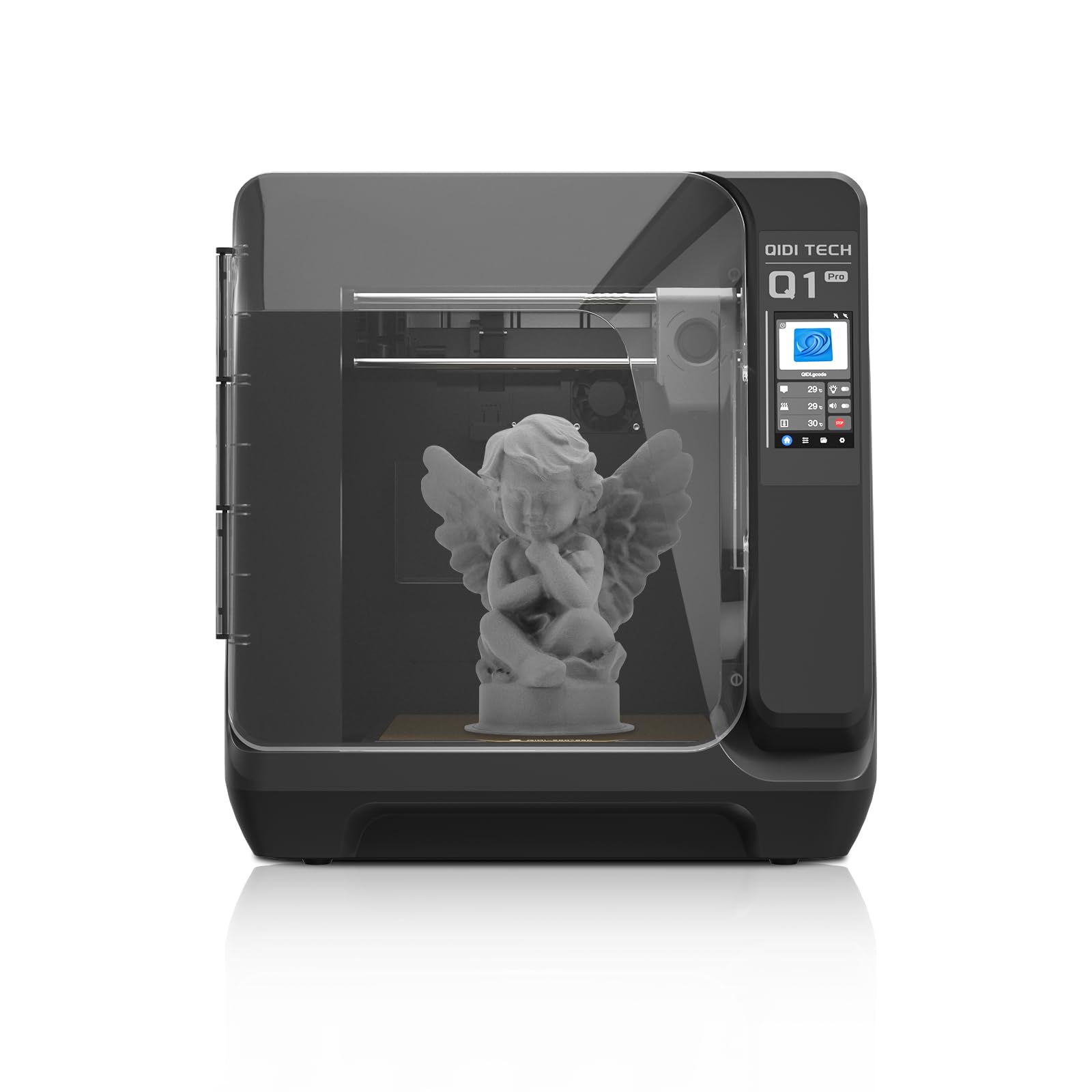Compare Q1 PRO vs K1 Max
Comparison between the best 3D printers
Choose the best 3D printer at the best price. The cheapest 3D printers are here.
Buy a 3D printer here with 3D Fila.
 |
 |
|
| Model | Q1 PRO[BUY Q1 PRO] |
K1 Max[BUY K1 Max] |
| Printing Material | Filament | Filament |
| Buy Filament for QIDI Q1 PRO | Buy Filament forCreality 3D K1 Max | |
| Estimated price | $449,00 | $1300,00 |
| Manufacturer | QIDI | Creality 3D |
| Release Year | 2024 | 2023 |
| Print Volume [mm] | 245x245x245 | 300x300x300 |
| Printer Size [mm] | 467x477x489 | 435x462x526 |
| Weight [kg] | 20 | 18 |
| Power Loss Recovery | YES | YES |
| Enclosed printer | YES | YES |
| Bed Leveling | Automatic | Automatic |
| Filament End Sensor | YES | YES |
| Bed type | Heated | Heated |
| Power supply system | Direct Drive | Direct Drive |
| Standard nozzle | 0,4 | 0,4 |
| Maximum Nozzle Temperature [°C] | 350 | 300 |
| Maximum Bed Temperature [°C] | 120 | 100 |
| Maximum printing speed [mm/s] | 600 | 600 |
| Filament holder | YES | YES |
| Camera for supervision | YES | YES |
| Recommended filaments | PLA、ABS、ASA、PETG、TPU、PC、PA、PA-CF、PET-CF、PAHT-CF etc. | ABS, PLA, PETG, TPU, PA, ASA, PC, PLA-CF, PA-CF, PET-CF |
| Recommended slicers | QIDI Slicer/Cura/Simplify 3D/ORCA/PRUSA Slicer | Creality Print, Cura, Simplify, Slic3r, IdeaMaker e outros |
| Maximum Resolution [mm] | 0,1 | 0,1 |
| Processor | Cortex-A53,64-bit Processor | |
| Display | Touchscreen 4,3'' | Display touchscreen 4,3'' |
| Power Supply | 350 W | |
| Connectivity | WiFi/USB Flash Drive/Ethernet Cable | USB / Wi-Fi / Ethernet |
| Operating systems | Windows, Linux, Macbook | Windows, Mac, Linux |
| Date of registration in the system | 2024-07-09 | 2023-12-01 |
| Release date | 2024 | 2023 |
| Extra features | The QIDI Q1 Pro 3D printer stands out for its Core XY structure and heating chambers that reach up to 60ºC, ideal for advanced materials such as ABS and Nylon. It features Klipper firmware, an automatic leveling system, a high-flow extruder with a double metal nozzle and a hotend that reaches 350ºC. It offers connectivity via Wi-Fi, USB and Ethernet, as well as a 1080p camera for remote monitoring and an intuitive touchscreen for easy operation. | The Creality K1 Max stands out as a fast Core XY 3D printer with a large build volume of 300 x 300 x 300 mm. It is fully enclosed and equipped with AI sensors to prevent print failures. This model has a smooth and flexible PEI build platform, and uses an automatic leveling system with LIDAR, as well as a filament run-out sensor. LAN, Creality Cloud and USB Flash Disk connectivity are available, as well as a 4.3-inch touchscreen interface. The K1 Max is robust, weighing in at 18 kg, and includes an AI camera and limited version of the Klipper firmware. Its motion system is solid and the printer is efficient with high-temperature filaments, but it is not silent. Assembly is 99% complete, requiring only minor adjustments before use. |
| Support for multiple colors and materials (AMS and CFS) | NO | NO |
Notes * |
||
| Cost-benefit | 8 / 10 | 7 / 10 |
| Hardware | 4.8 / 10 | 4.2 / 10 |
| Tela | . | . |
| Print volume | 3 / 10 | 4 / 10 |
| Performance | 5 / 10 | 5 / 10 |
| [BUY Q1 PRO] | [BUY K1 Max] |
Conclusion |
| In conclusion, when comparing the QIDI Q1 PRO and Creality K1 Max, both 3D printers offer notable features and capabilities, but cater to different needs and budgets. The QIDI Q1 PRO, priced more affordably, offers an impressive range of features including a high maximum nozzle temperature and bed temperature, which make it suitable for a variety of advanced materials. It also incorporates automatic leveling, a robust camera for monitoring, and a user-friendly touchscreen interface. Its compact print volume may appeal to hobbyists and users with limited space. On the other hand, the Creality K1 Max, while significantly more expensive, provides a larger build volume along with a fully enclosed structure, making it a better option for larger projects or industrial applications. Its advanced automatic leveling system with LIDAR and AI sensors enhances printing reliability, although it comes with a trade-off in noise levels. The sturdy construction and additional connectivity options make it a versatile choice for those who require robust performance. Ultimately, the choice between these two printers will depend on individual requirements—whether one prioritizes cost-effectiveness and versatility or the need for larger prints and advanced features. Both printers receive similar ratings for cost-benefit and performance, indicating that each has its unique strengths suited to different types of users. |

